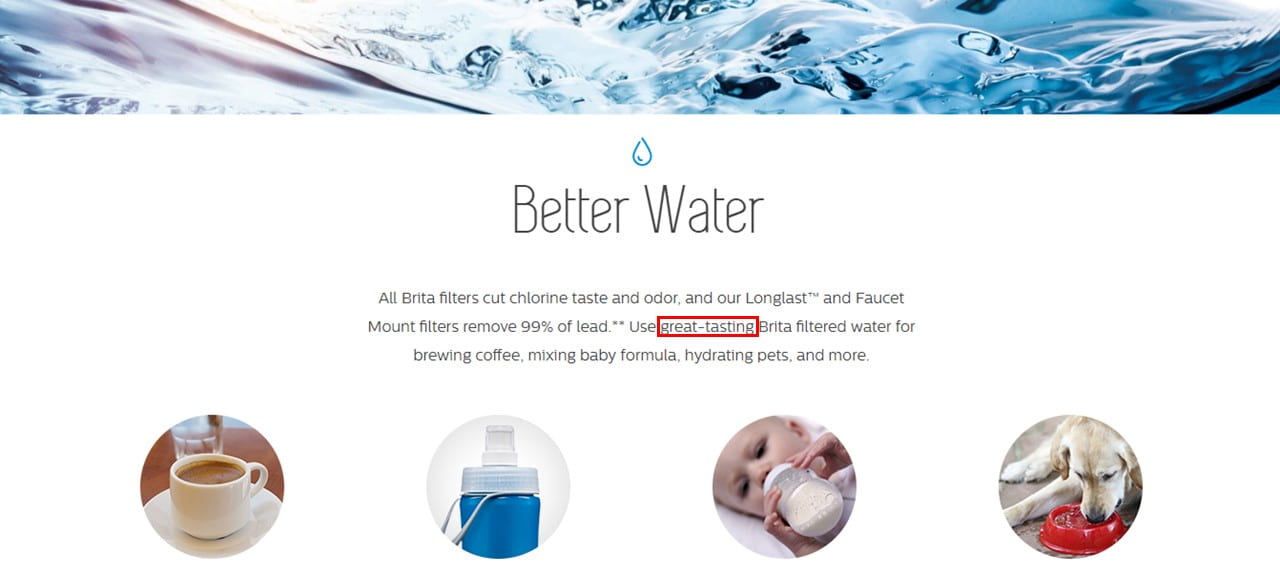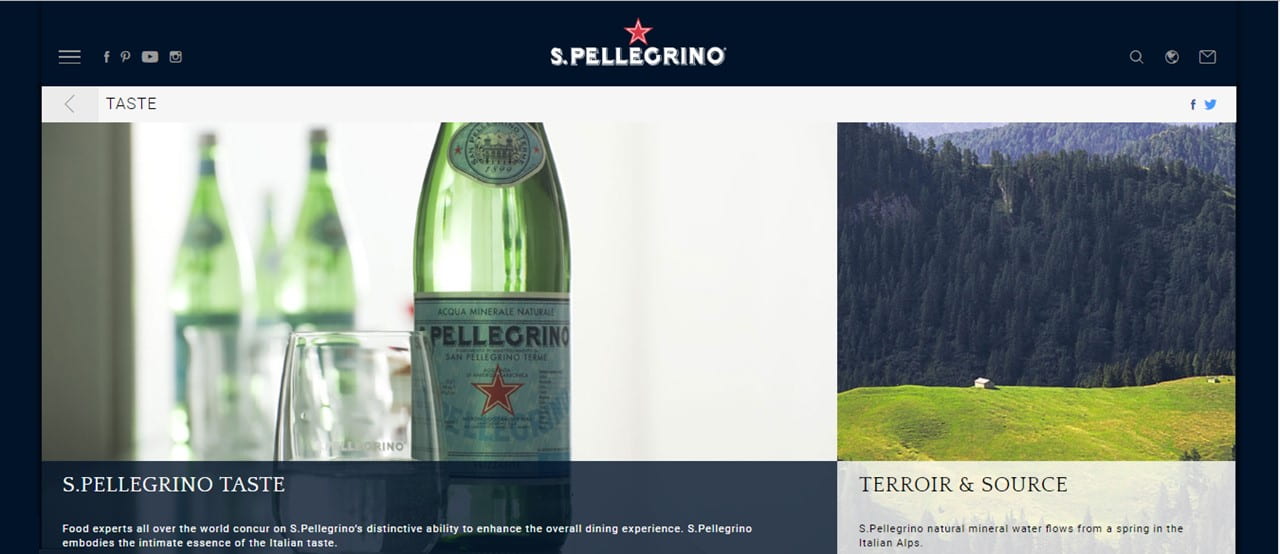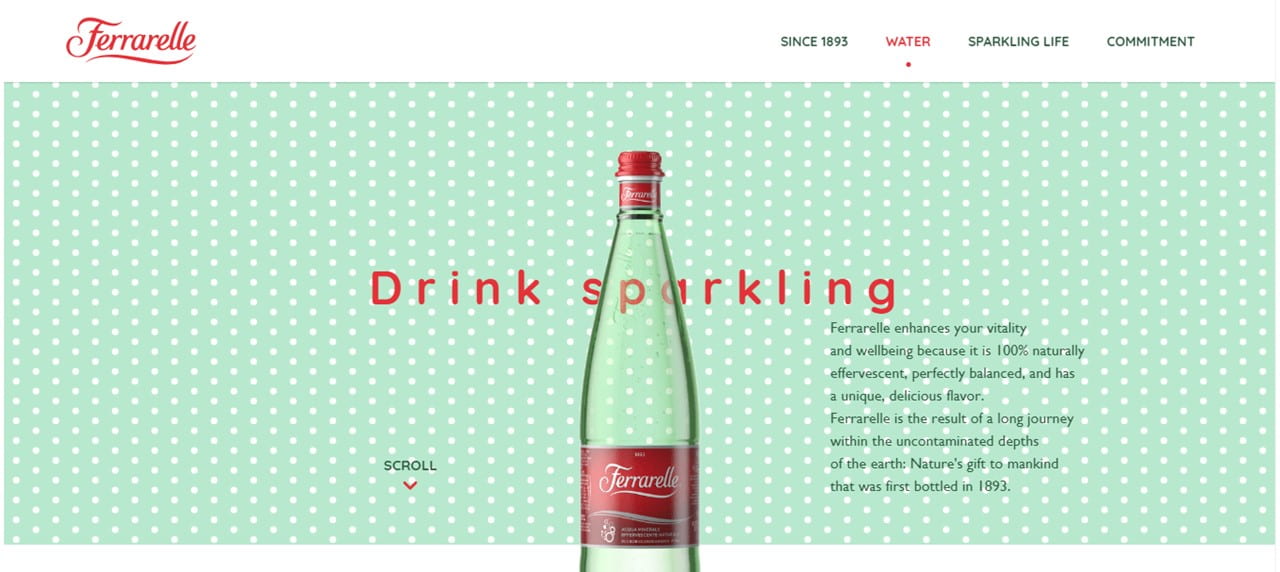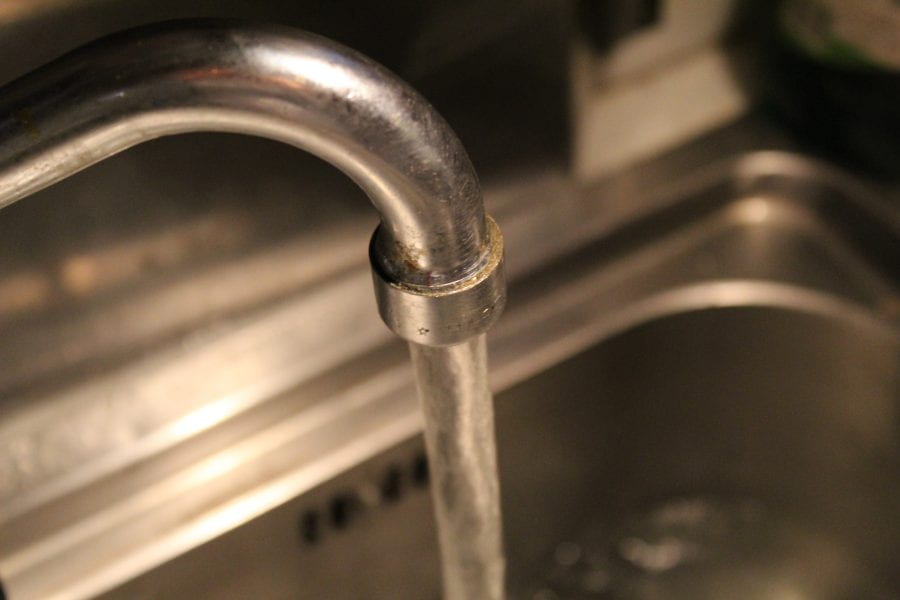By Luna Sarti
On platforms aiming to disseminate knowledge to a broad audience, water is often defined as a “colourless, transparent, odourless liquid” which is at the basis of the fluids of living organisms (the Oxford dictionary). At times, popular definitions can include reference to its “tasteless” quality (Wikipedia). Such understanding of water as being “naturally” devoid of flavor, color, or odor informs not only standard definitions but also our expectations for particular forms of water. These characteristics that are ascribed to “pure” water, in fact, play a crucial role in the development of drinking habits in contemporary societies. It is not by chance that popular, international filtering companies like Brita advertise filters that are able to provide “water with a great taste” by removing unwanted flavors such as chlorine and limescale, and thus produce drinking water that is flavorless and supposedly closer to an ideal conception of pure water. Through processes of filtration, water flowing from the tap is transformed into better tasting water. This process of re-making aims to obtain that tasteless quality that characterizes a certain imaginary around water in its pure form.

One of the most striking aspects of contemporary values associated with drinking water lies in the contradictory expectations that are activated by tap water and mineral water. While the quality of tap water is assessed on parameters that privilege the absence of taste, there is a strong culture that views particular waters as unique and valuable on the basis of their properties, composition, and flavor. Tap water is deemed good when devoid of flavors, whereas bottled waters are advertised and highly valued because of their peculiar mineral flavors. When comparing attitudes towards tap and bottled waters, “great tasting” can signify both the absence and the presence of distinct flavors.

In his book Medieval Tastes: Food, Cooking, and the Table, historian and food studies scholar Massimo Montanari identifies a similar distinction when analyzing medieval attitudes toward the flavors of water. According to Montanari, the Middle Ages inherited from ancient science the idea that “water itself has no taste” even if it “potentially contains them all” (123). This conception of “pure water” as being tasteless is indebted to a long history in Western natural philosophy that dates back to Greek and Roman traditions, from Empedocles to Democritus and Anaxagoras up to Aristotle, Hippocrates and Pliny the Elder. Nevertheless, Montanari shows how in medieval tradition this conception of water did not translate into parameters for the consumption of water. On the contrary, while the water most recommended by dietary manuals was rainwater, a broad range of cultural practices existed “aiming at combating the ‘banality of water’ by altering it with additives of various kinds and playing with the temperature when served – modifying in essence the ‘natural’ state of the product” (123).
Other scholars of medieval water culture, such as Squatriti in his article “I pericoli dell’acqua nell’alto medioevo italiano” (The dangers of water in the High Middle Ages), agree with Montanari in stating that in Roman tradition ‘pure water’ was viewed as “a simple drink that was consumed by women, children and slaves, and by the lower class” (590) and that this conception continued to play a crucial role in medieval attitudes toward drinking water. Thus, while Greek and Roman natural philosophers identified water in its pure state as being tasteless, colorless, and odorless, they did not usually rank this form as the preferred kind for drinking. On the contrary, they simply viewed taste as a parameter to distinguish and classify the multiplicity of its forms on earth while establishing a connection between flavor, properties, and effect. In the Natural Questions Seneca for example described a wide range of flavors, from sweet to pungent, without structuring a rigid hierarchical system.
All waters are still, or running, or collected, or occupy various subterranean channels. Some are sweet (dulces), others have flavours that are disagreeable in different ways (asperae); among them are the salty (salsae), the bitter (amarae), and the medicinal (medicatae). In the last category I mean sulphur, iron, and alum waters. The taste indicates the properties. They have many other distinctive qualities in addition. (Book 3, 2.1-2. Translated by Thomas H. Corcoran)
Seneca’s “system of flavors” is derived from Aristotle and characterizes the Middle Ages together with the idea that waters can naturally acquire different flavors as a result of their interactions with different soils. This, too, is a widespread conception in natural philosophy which was already present in canonical texts from Aristotle and Hippocrates to Pliny the Elder. Similar descriptions and explanations for waters on the basis of their flavors can be found in many other authors such as Frontinus, Augustine, Isidore of Seville, and Bede the Venerable.
Looking at the contradicting standards for classifying waters from this historical perspective, we can view contemporary attitudes towards drinking water as being informed by values and assumptions with a long history in Western tradition. Moreover, the apparent contradiction that emerges in assessing “good water” both through its “flavorlessness” and its unique taste can be seen as the consequence of the development and transformation of qualitative systems of flavors and thus in relation to what each flavor signifies in a specific cultural context.
In this sense, we could ask why today limescale and chlorine are culturally positioned as being “bad flavors” that must be removed while other flavors are not only to be appreciated but also to be understood as “good”. In the specific case of chlorine, for example, detecting its distinct smell and taste activates our awareness of the invisible processes that go into the making of tap water, such as disinfection and chemical treatment. On the contrary, mineral waters are presented as being made by nature, in spite of the fact that this process of making is the result of chemical interactions. The perceived category of the natural seems to play a crucial role in determining this distinction between “good” and “bad flavors”.

Although water departments release data on water quality and use complex biological and chemical markers to assess water quality, research supported and spread by the International Water Association reveals how aesthetic criteria such as color, flavor, and odor represent the main parameters used by consumers to assess water quality (see for example Franco Doria et al.). Considering that taste plays a crucial role in determining if water users decide whether or not to drink tap water (and being mindful of the resources invested in producing tap water), it is worth reflecting on the complex cultural and historical legacy that determine such decisions, rather than positioning “aesthetic perception” as being anti-scientific and thus requiring just policies for scientific literacy. Further comparative historical research could help illuminate what values inform contemporary systems of flavors in relation to water.
Luna Sarti is a Ph.D. candidate in Italian Studies at the University of Pennsylvania. Her research explores the shifting cultures and practices of water that bound the Arno river in Florence. In her dissertation, she analyzes site-specific medieval and early modern narratives of flooding to discuss if, when, and how flood is to be considered a “natural disaster.”
Featured Image: Photo by author.



